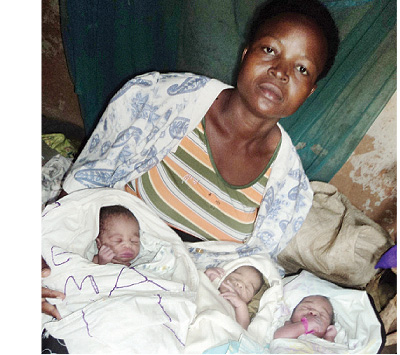Giving birth, though painful, is supposed to be a joyful process, a process of pride that reflects the dignity of a woman and puts her aside as the mother of all humanity. But this is not always the case as mothers have across the country been forced into giving birth under terrible and inhumane conditions that degrade all the dignity that women are naturally entitled to given their life giving role in society. Such has been the plight of women in Luuka District who have been subjected to giving birth under trees and in dingy squalid and dirty rooms when it rains because there has been no semblance a premise in the form of a maternity ward where women can be taken to give birth.
It all started in 2012 when fire gutted the maternity ward at Kiyunga Health Center leaving the health facility without a maternity ward. This left the facility bereft of options of how to handle the cases of pregnant mothers that came to the hospital and what followed is a harrowing tale of just how far the challenges of the decentralized system of health system management in Uganda can become synonymous with decentralisation of health rights violations. Luuka District it should be noted is one of the newer districts in Uganda and its facilities haven’t been upgraded to reflect its District status so Kiyunga Health Center is operationally a District hospital for Luuka District without the capacity to serve as a district Hospital. Therefore when the maternity ward was burnt down leaving the district without a maternity ward it became a case of stealing from the church mouse.
Concerned by the on-going human rights violations at the health facility, CEHURD took special interest in the matter and led a fact finding mission to establish the state of affairs at the facility which confirmed the worst of our fears that indeed mothers were giving birth under trees, on verandas and in dingy rooms because the maternity ward had been burnt. Unfortunately the Luuka District Local Government which is mandated with administration of health facilities and provision of medical services at that level did nothing to rectify this situation because apparently protecting the dignity of mothers giving birth in the district is not one of the financial priorities of the District.
CEHURD begun a process of engagement of the district authorities to prioritise the renovation and restoration of the maternity ward at the hospital to the extent of issuing a notice of intention against the district authorities to sue for the continuing violations of the rights of women in the district. Despite the slow reaction to the needs of the women in Luuka District, CEHURD is pleased to confirm that our efforts have paid off and following a resolution by the District Local Council Meeting held in December 2014, funds have been specifically committed to the reconstruction of the maternity ward at Kiyunga Health Center in Luuka District.
In a recent meeting with the Chief Administrative Officer Luuka District, the Chairman LC3 Kiyunga, the District Secretary for Health and CEHURD representatives, the CAO confirmed that the District has committed funds for the reconstruction of the Maternity Ward and showed CEHURD representatives a copy of a Memorandum of Understanding entered between the district and the UPDF Engineering Brigade for the reconstruction of the ward. We appreciate the Luuka District Local government for finally seeing sense in the situation and avoiding litigation to prioritise the rights of mothers in the district. CEHURD will continue to monitor the developments for the expeditious reconstruction of the ward to immediately rectify the on-going violations of the maternal health rights at the health facility.
By James Zeere





